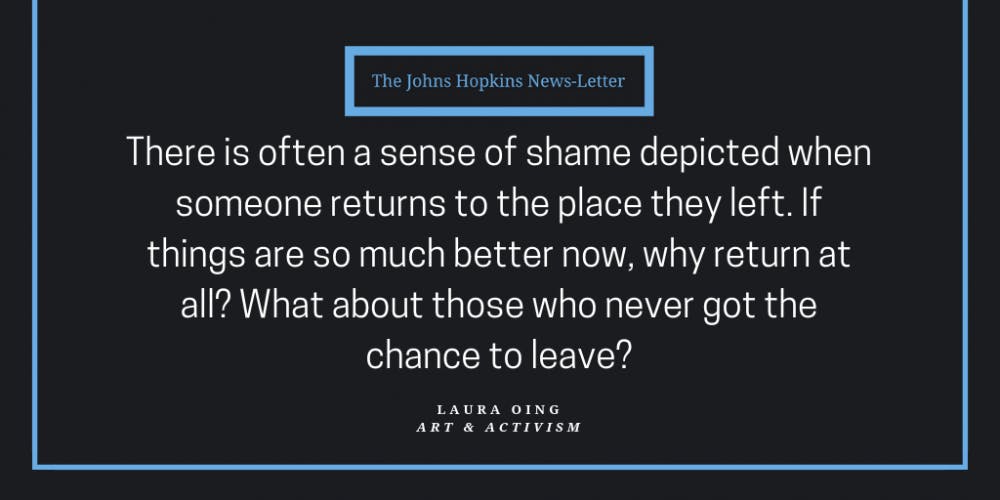
Nobody warned me before I went to The Book Thing of Baltimore that it would be at least an hour-long endeavor in pacing and scanning shelves for anything that caught my eye.
As someone who normally craves a certain level of organization, I was pretty overwhelmed upon first walking into this treasure-hunters paradise, where patrons are allowed to take as many free books as they like.
It was on this spontaneous first adventure that I stumbled upon a 25th anniversary copy of The House on Mango Street.
While I had heard of the book in high school, it wasn’t until my freshman year here that I discovered the woman behind the stories: Sandra Cisneros.
The first piece I read by Cisneros was a short story called “Never Marry a Mexican,” a story which my Intro to Fiction and Poetry II teacher sneakily added to our syllabus, insisting we read more than dated works by white men.
Reading “Never Marry a Mexican” didn’t give me the most accurate impression of Cisneros’ work. While it was written beautifully, I found the first person narrator extremely bitter, spiteful and self-destructive.
Fast forward to the end of my sophomore year when I took a class called Fiction and Social Engagement. Throughout the course we worked with high school student-writers from around Baltimore, exploring the ways fiction can be used to spread awareness of social injustices and jumpstart action.
It was a lot of fun, and I credit that class with helping me to see a whole different side of fiction. This, in turn, made me want to start this column about socially engaged works of fiction and film.
At the end of the semester, I made my aformentioned visit to The Book Thing, which gave me the perfect excuse to get a copy of The House on Mango Street.
Admittedly the main reason I wanted to read it was because it’s one of those books that “everyone” has read at least once. I wanted to be a part of “everyone,” to be able to talk about it at theoretical cocktail parties or during discussions with my friends.
Of course, the fact that it was a book by a woman of color about a young person of color also led me to add it to my reading bucket list. I’m ashamed to say I was not expecting I’d enjoy it as much as I did.
The book is formatted as a collection of vignettes. Though the narrator remains constant — a girl named Esperanza — readers are introduced to a wide cast of characters ranging from Esperanza’s family to a handful of others in the neighborhood.
There’s a sense of a loss of innocence imbued in the narrative that is beautiful in its simplicity and heartbreaking in its honesty.
Her observations are clearly detailed, so that readers have a grasp of what is really happening even if Esperanza herself doesn’t understand the weight of what she’s saying. Still, Esperanza observes it all, shedding a light on the problems that exist on Mango Street.
Yes, it is heartbreaking, but it is not completely without hope. I see The House on Mango Street as a testament to the resiliency of a child, a child overlooked by the majority of society.
Esperanza knows that her neighborhood is seen as undesirable, and this drives her to dream of leaving it behind. But, as the book ends, Esperanza begins to question whether this is even possible. This is reflective of the way that the past sticks with us whether we want it to or not.
There is often a sense of shame depicted when someone returns to the place they left. If things are so much better now, why return at all? What about those who never got the chance to leave?
But the way I see it, there is no shame in remembering where you grew up, nor in loving every bit of that place for the home that it once was.





